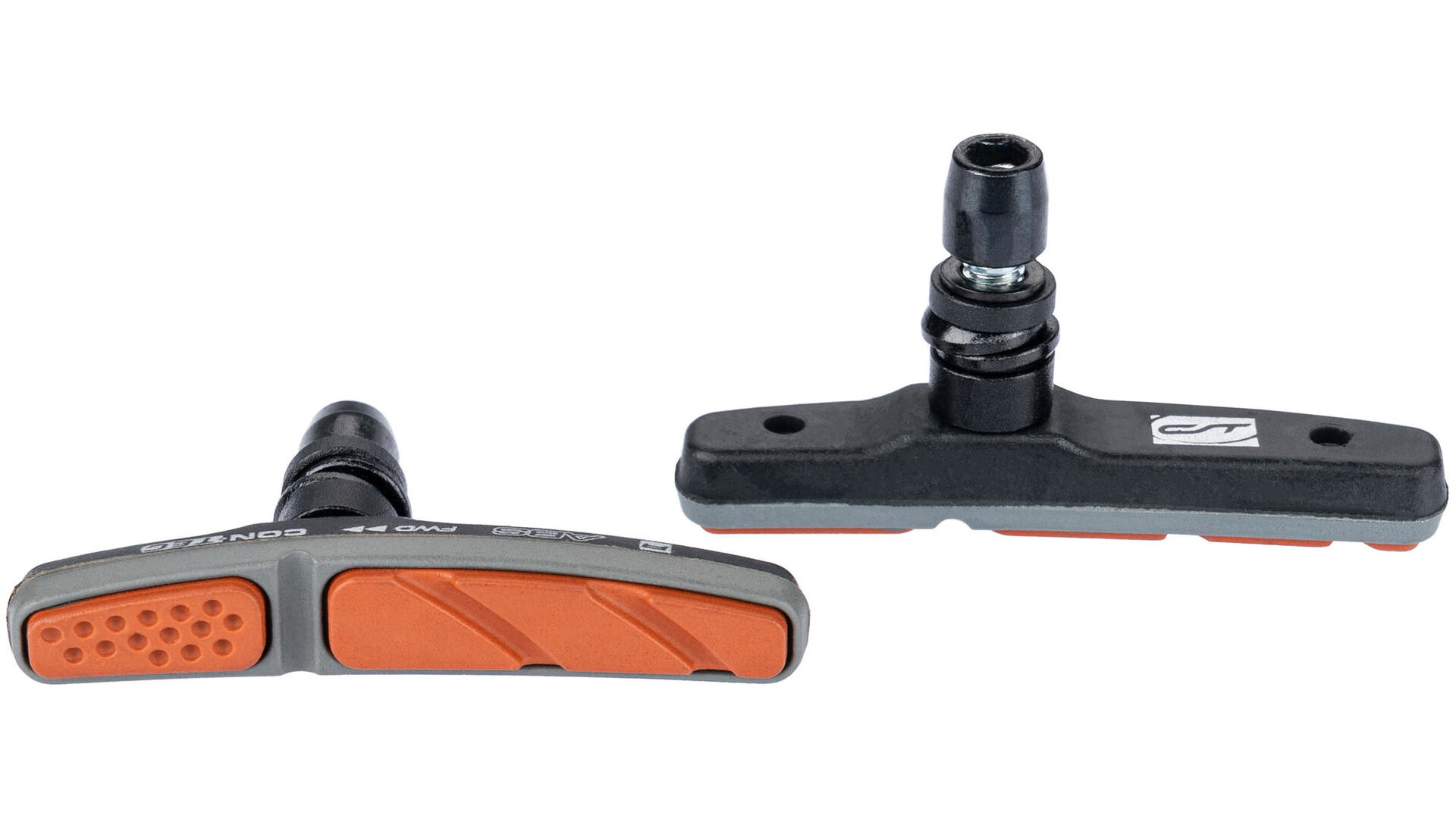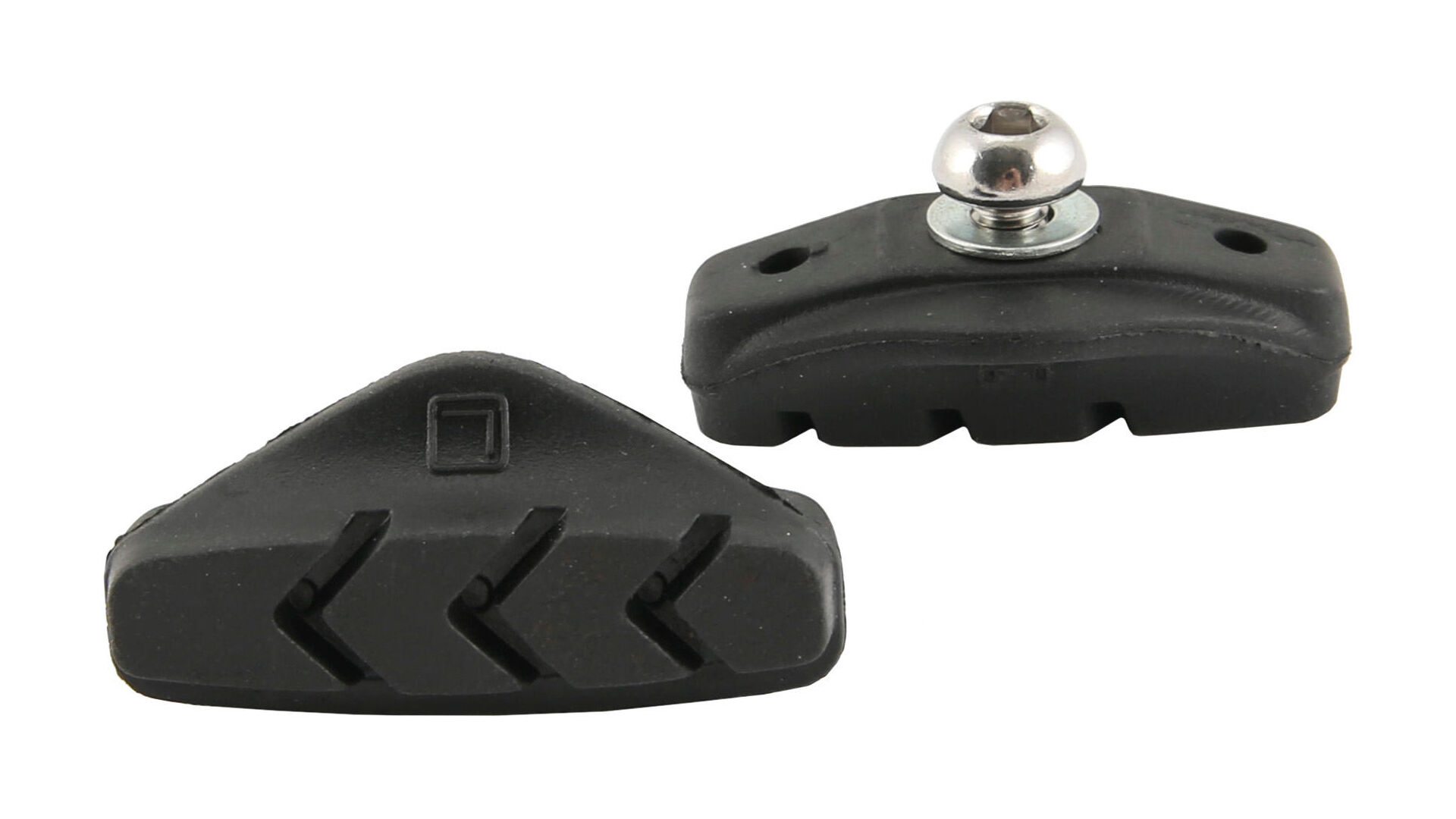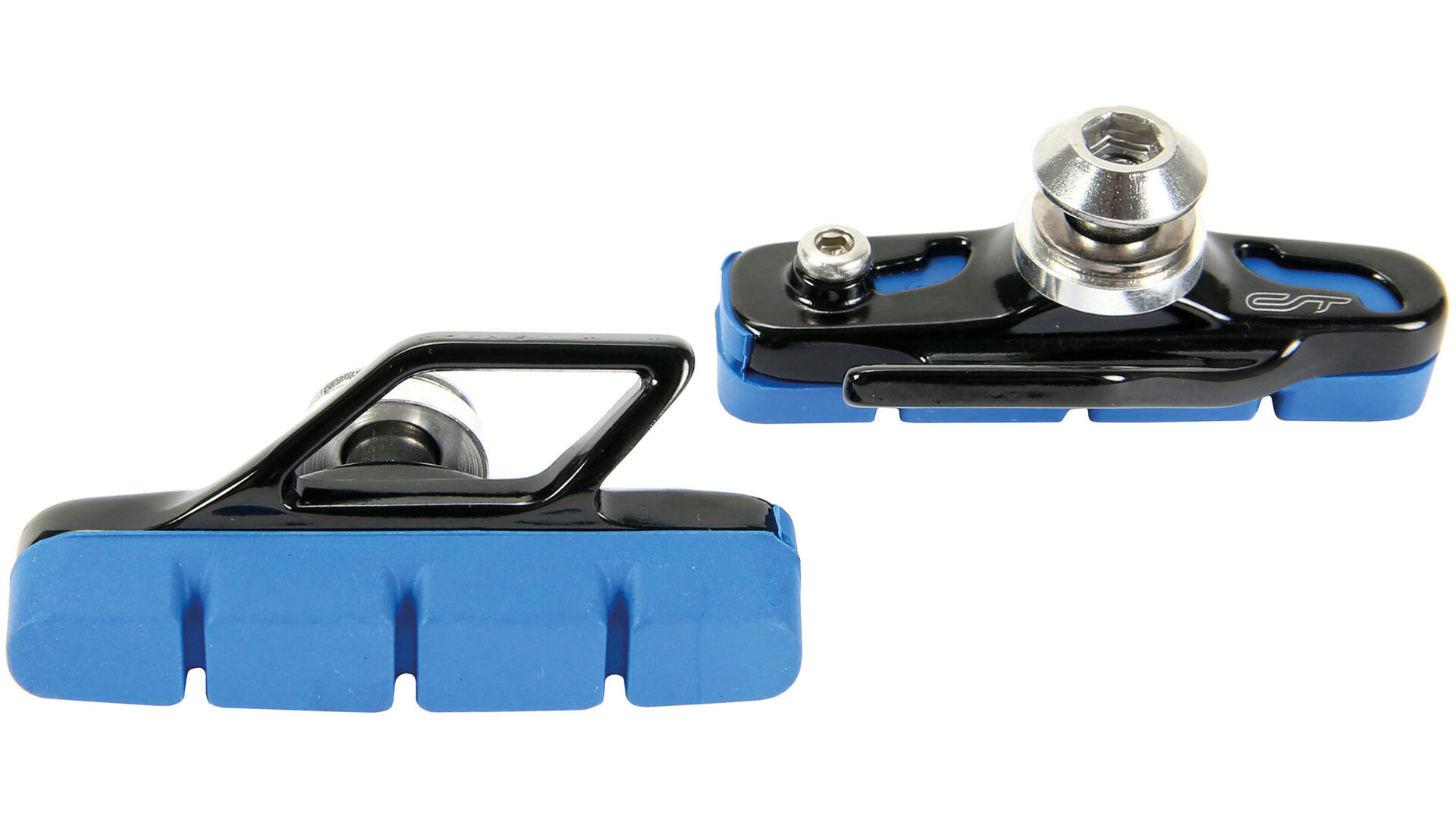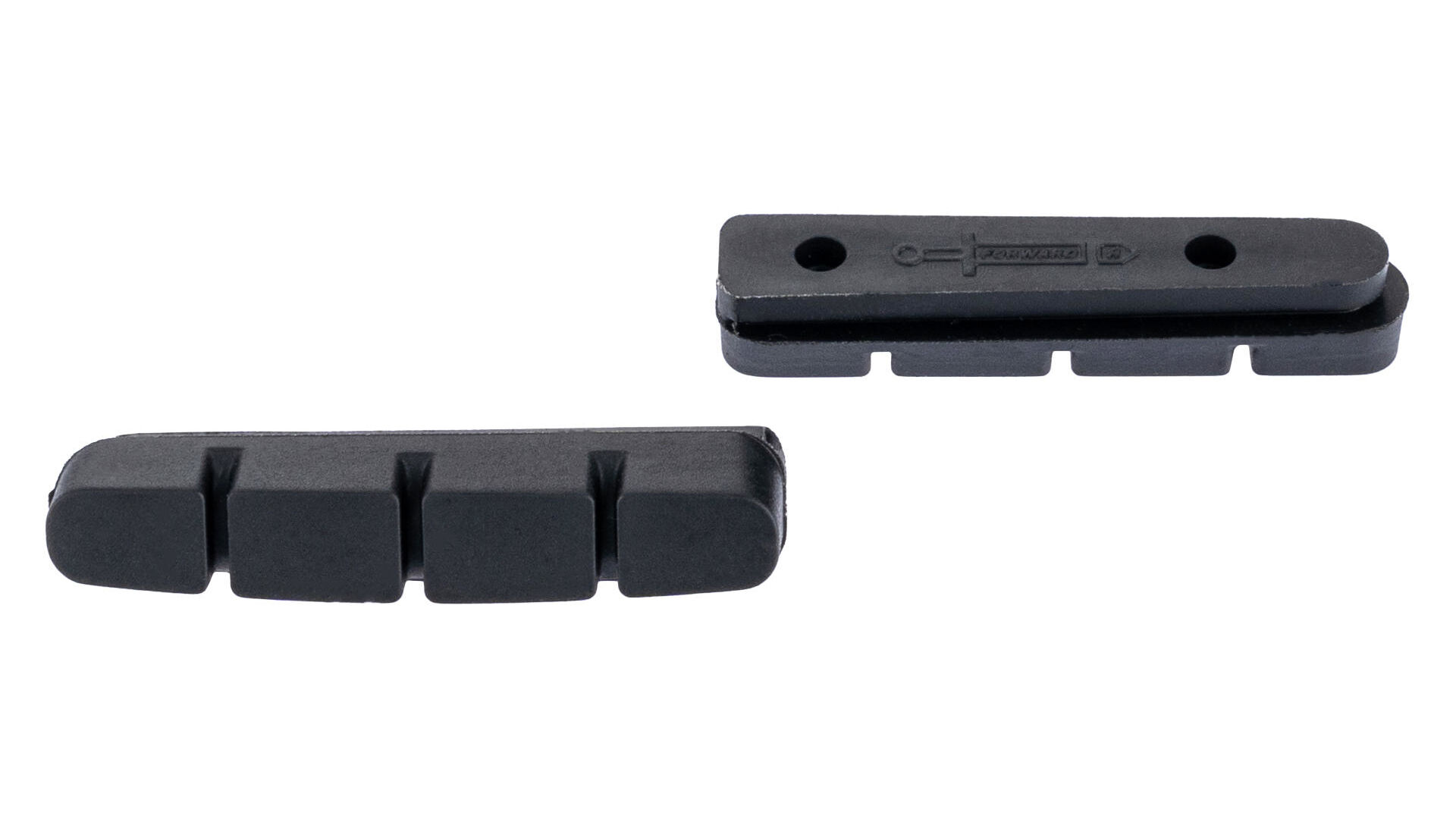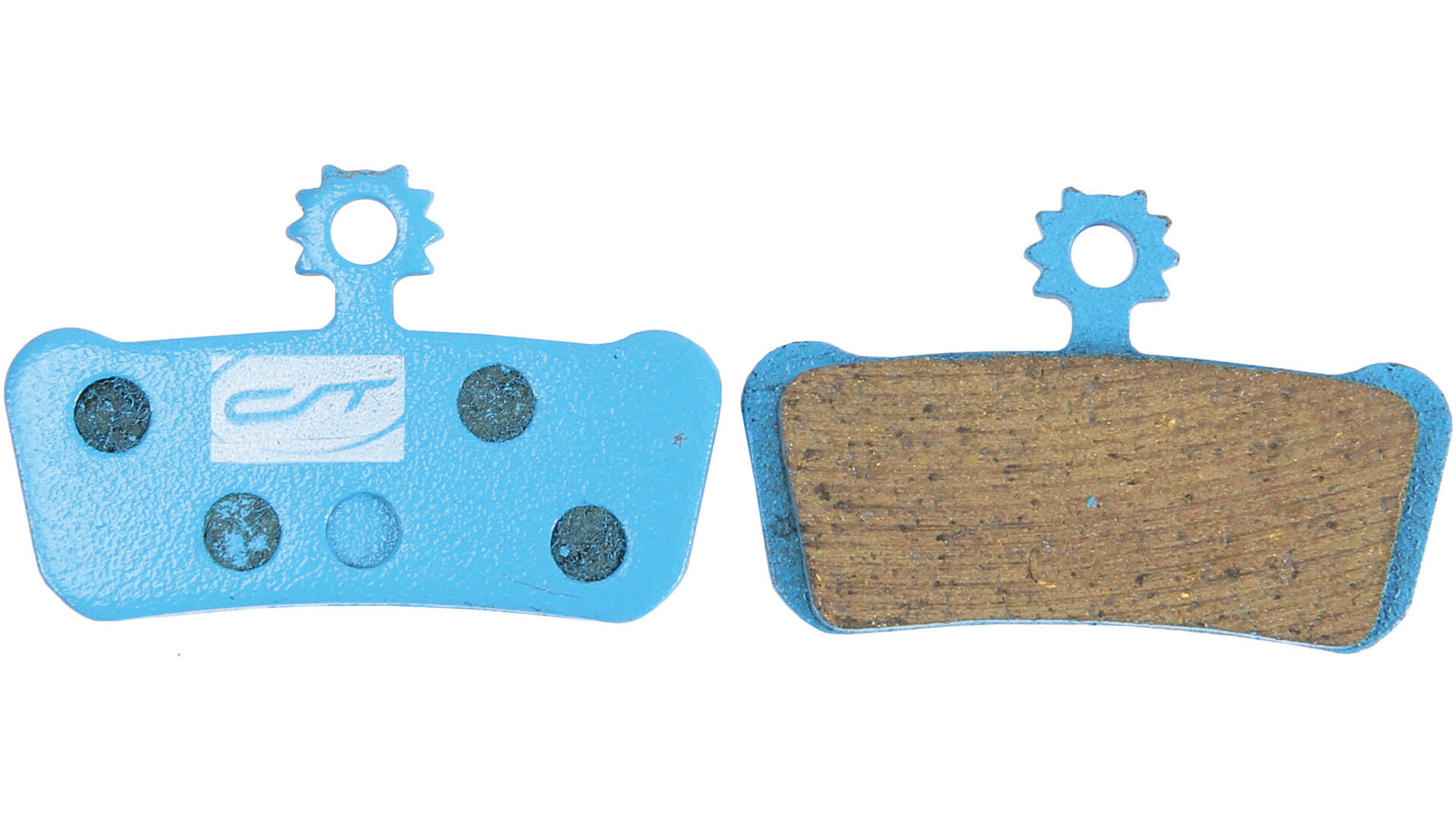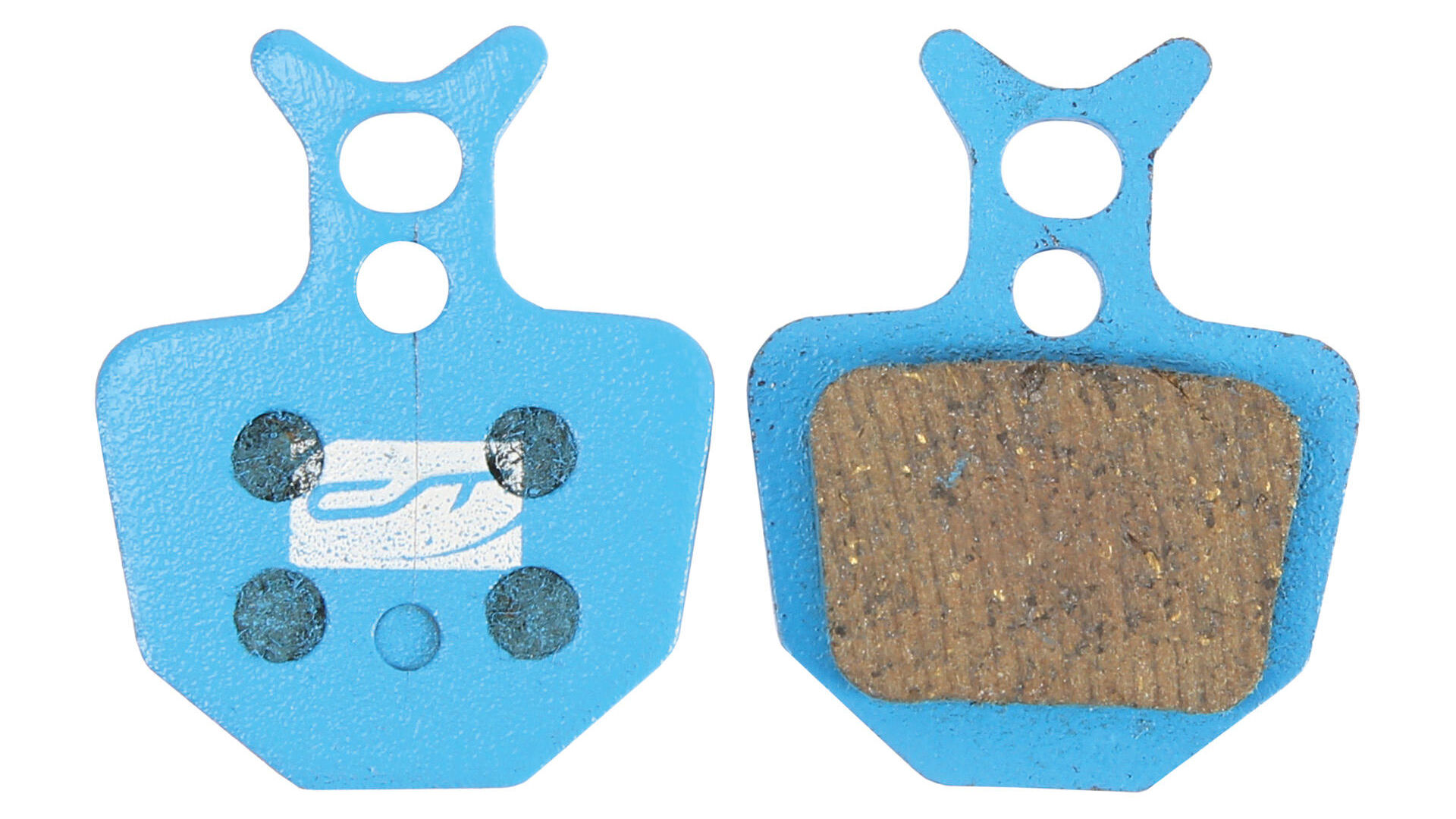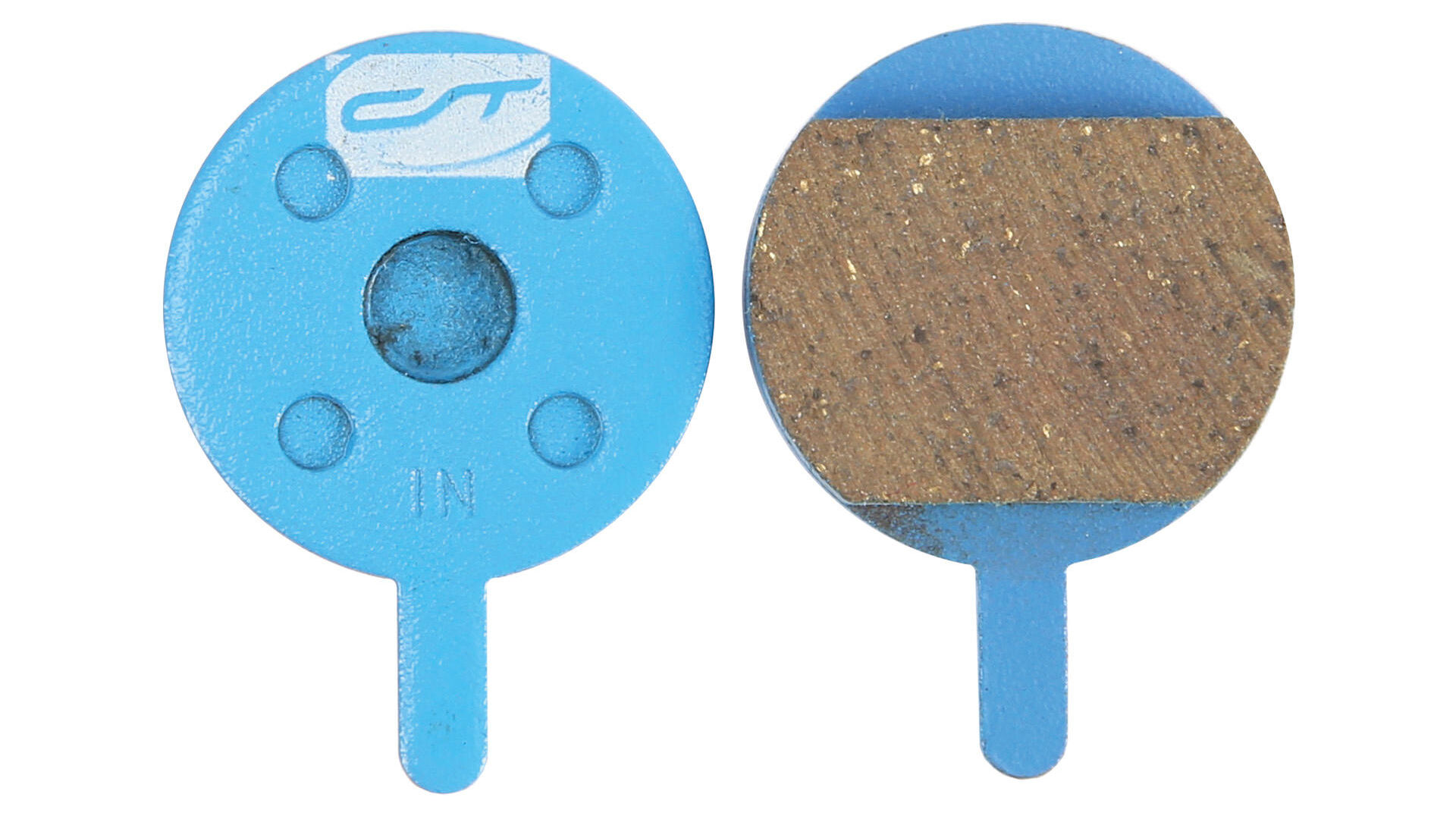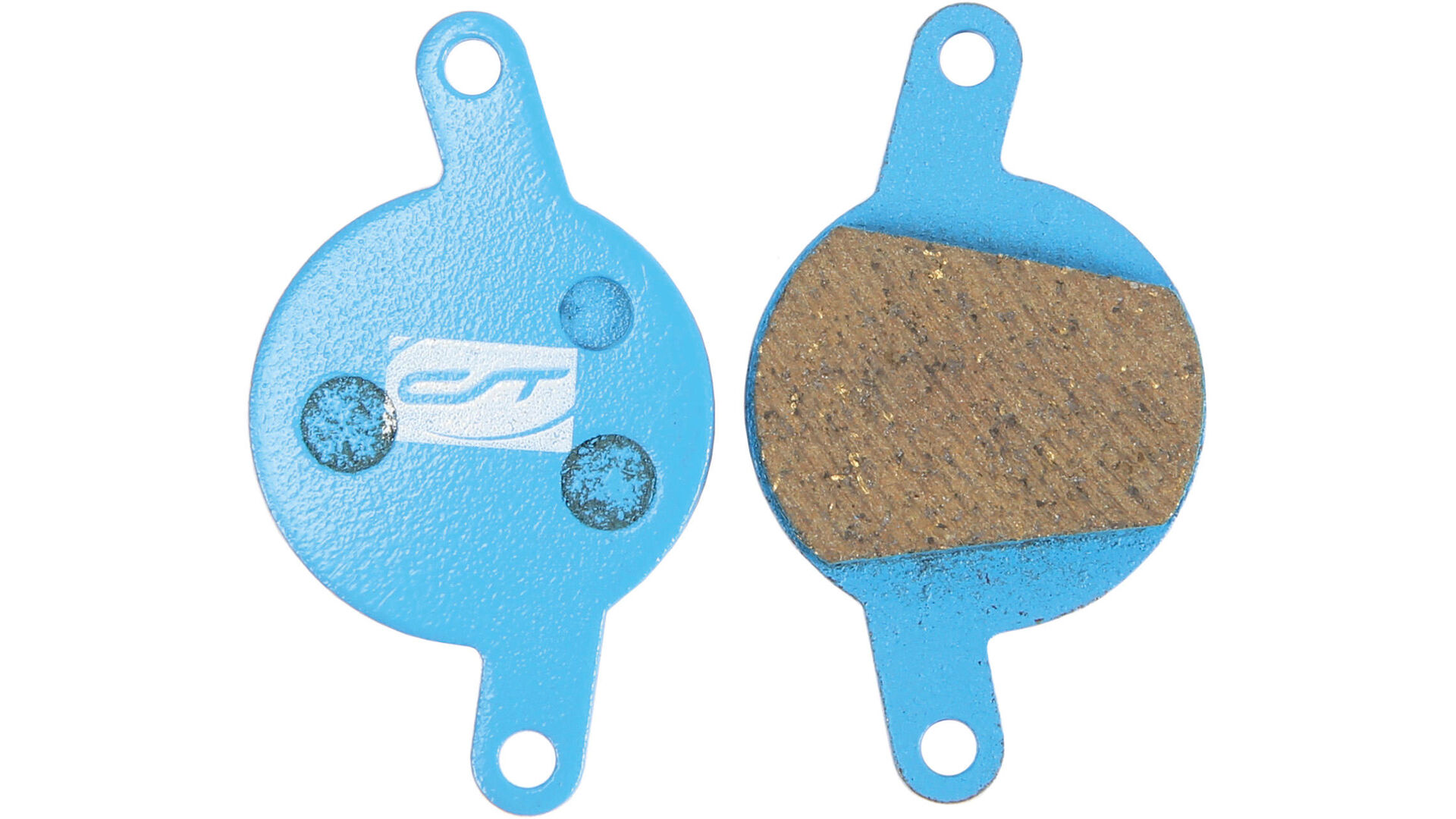Bicycle inspection - recognising wear and tear, replacing and repairing parts

Why are there so many different brake pads?
There is no uniform standard for brake pads. Sizes and mountings vary greatly depending on the manufacturer. There are also different materials. However, CONTEC is up to date and is constantly updating its range. However, we make no compromises when it comes to braking performance!
Summer is just around the corner, you and your bike want to get out there riding - but before you can really start, you need to inspect, maintain, and repair your bike. Why is this crucial for having a great season? It's all about the longevity of your bike, not to mention your safety.
The great thing about bikes is that you can repair many things yourself at home with the right tools. But one wrong move can do more harm than good. That's why we'll show you what to look out for.
Recognising wear and tear on your bike before it leads to a problem
If you recognise and repair wear and tear on time, you can extend the service life of your bike and avoid unpleasant surprises on the move. Nothing is more annoying than being stranded in the middle of nowhere because your tyres, brakes or gears should have been serviced a long time ago.
Many things become apparent during an attentive test drive: Do the gears shift, do the brakes work, does the steering work smoothly? Are there any unusual noises, such as cracking or grinding? It is important that you pay close attention to these kind of signs.
Your guide for bike maintenance
Let's now take a closer look at different areas of your bike. We will often link to existing how-to´s in our guide section. Here you´ll see exactly how to proceed and what you need from our range. This way, you can get your bike in tip top shape and enjoy the coming season without any worries.
Skip directly to the individual bike parts:
tyres
inflate tyres
patching up the tube
conversion to tubeless video
changing tyres
brakes
replacing brake pads
adjusting disc brakes
bleeding hydraulic brakes
replacing brake cables
contact points: grips, pedals, saddle
changing grips on the bike
changing bicycle pedals
fitting and adjusting the bicycle saddle
drive parts
changing the bottom bracket video
changing the bicycle chain
exchanging sprockets on hub gears
adjusting derailleur/hub gears
light
repairing bicycle lights
fitting new lights on a bike
components
exchanging handlebars and stem
fitting the seatpost
installing the dropper post
checking the headset
suspension fork
Solution: Look at our how-to inflate tyres and set the correct air pressure.

Tyres
Whether road, cobblestone, gravel path or single trail - your bike's tyres ensure the right grip and your riding safety. The inspection starts with the correct tyre pressure, but this is not the only important factor.
Enough air in the tyres
Problem: There isn´t enough air in the inner tube. The tyres are soft.
Why is it important? Not enough air in the tyres leads to punctures, broken wheels, and an increased risk of crashing.
Flat tyres
Problem: Is a tyre flat or is the inner tube not holding air?
Why is it important? Without air in the tyres, your bike is not roadworthy.
Solution: Remove the wheel, dismount the tyre and either patch or replace the inner tube. You can find out how to do this in the How-To patch the inner tube.

Conversion to tubeless
Problem: In your view, traditional tyre + inner tube system are out of date and you are looking for an alternative?
Why is it important? Sporty riders are especially interested in the tubeless system. The advantages: no more tubes, more traction, less air pressure required, lower rolling resistance.
Solution: Tackle the project of converting your bike to tubeless tyres before the season! We show you exactly what you need to do in the How-To Convert tyres to tubeless or in the video.

The YouTube video was blocked due to your cookie settings.
Worn tyres
Problem: Tyres lose their tread or become brittle over time.
Why is it important? Without tread or cracked tyres, you're not riding in the fast lane, you're cruising dangerously!
Solution: Replace the tyre. We show you the necessary steps in the How-To tyre repair.

Brakes
Brake pads are made to wear out. Whenever you notice a drop in braking performance or strange noises when braking, you need to fix the problem. Otherwise, you should no longer ride on the road.
Worn brake pads
Problem: The material of your brake pads has become very thin and has been reduced to 1-2 mm. New brake pads are up to 5 mm thick. Your brakes squeal: an indicator of worn, organic brake pads. The unpleasant noise occurs when the metal of the brake pad hits the rim.
Why is it important? There is no braking without brake pads.
Solution: Look at our How-To on replacing brake pads and change the brake pads on rim or disc brakes yourself.

Adjust disc brakes correctly
Problem: The disc brakes squeal or don't have the braking power that you would expect from them.
Why is it important? If the disc brakes don't work properly, it's no fun.
Solution: Set the discs on your bike correctly with our How-To on adjusting disc brakes.
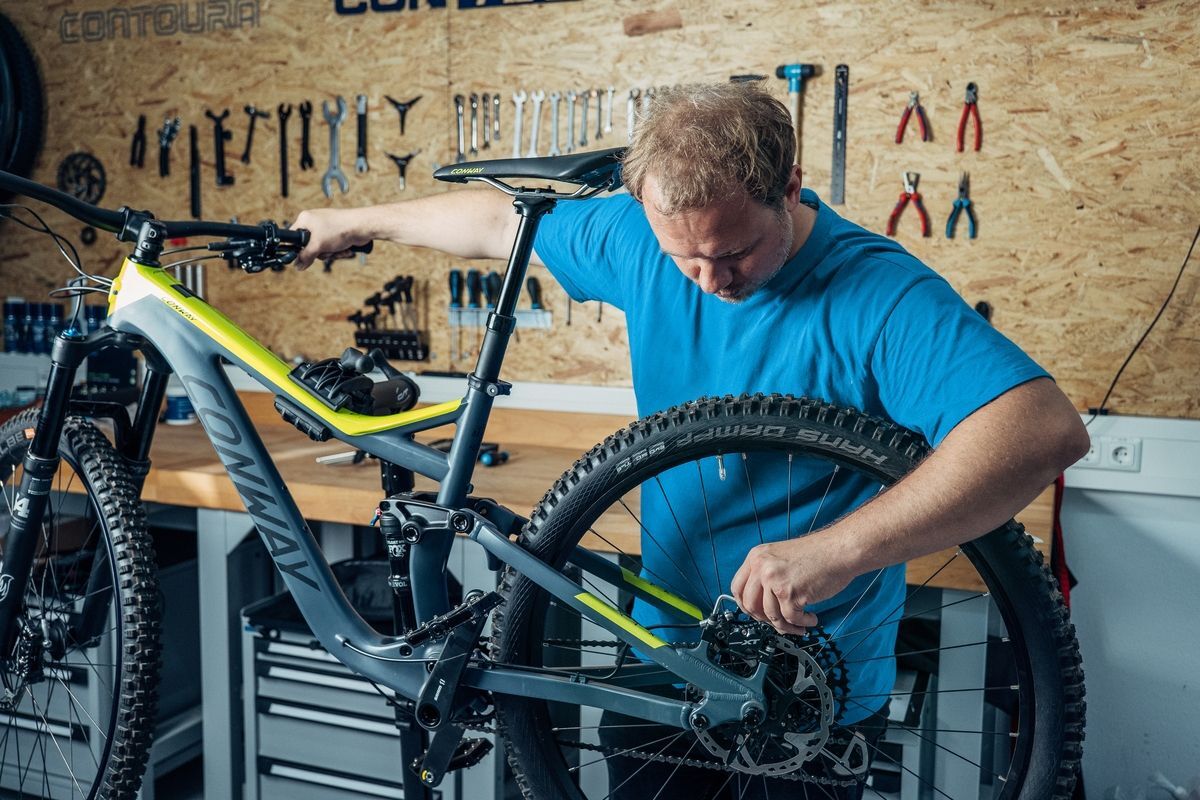
Bleeding hydraulic brakes
Problem: The pressure point is not constant. Sometimes you pull the brake lever several times until the braking force becomes stronger.
Why is it important? With hydraulic brakes - whether disc or rim - some air gets into the system over a period of time. This requires regular maintenance.
Solution: Bleeding the brakes! It is also recommended to change the brake fluid or mineral oil in the lines every 2 years, depending on the system.
With our Disc Stop Hydro Fuel bleeding kit, Care+ Brake Prep D, D+, O brake fluid and a video tutorial for the model from your brake manufacturer, you can easily take this matter into your own hands. But if you are not too sure, contact a competent bike workshop for your own safety. You can find one using our dealer search.
Replacing brake cables on mechanical brakes
Problem: The cables are rusty or corroded. Individual wires are coming loose, or you notice a sudden drop in braking power.
Why is it important? As a rule of thumb, we recommend replacing the Bowden cables of the brakes every 1-2 years or after around 5,000 to 10,000 kilometres. Beyond that, they can break.
Solution: Read through our tutorial on replacing brake cables and follow the instructions step by step.
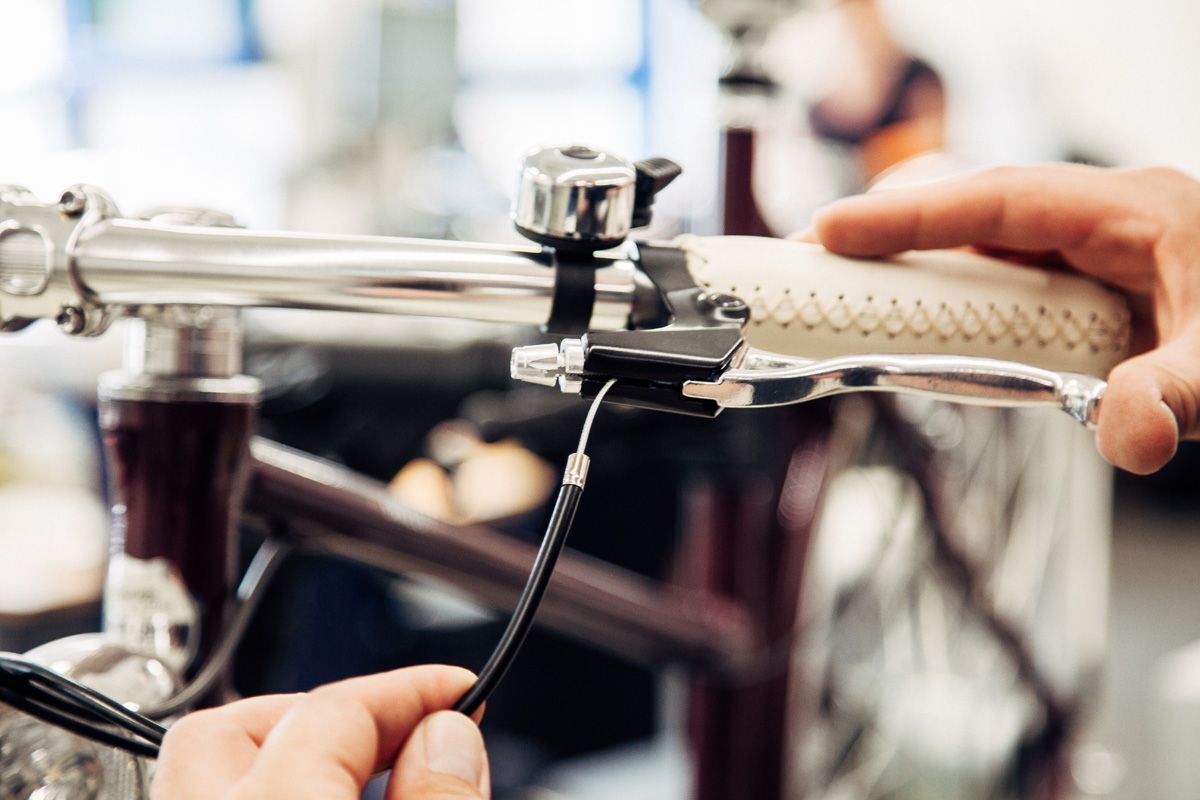
Contact points: grips, pedals, saddle
You and your bike are in contact at these three points: grips can wear out, pedals struggle with traction on your feet and even your favourite saddle can no longer function properly. Three instructions are available for this:
Replacing grips on the bike
Problem: They no longer provide enough grip; parts of the rubber are peeling off - or you would prefer a new pair for hygienic reasons after many years of use.
Why is it important? You should be able to always hold the handlebar of your bike securely in your hands. With the right model, for example from our MERGE and MERGE Cork series, it can add to a enjoyable ride, especially in the long term.
Solution: The how-to exchange grips shows you everything you need to know.

Replacing bike pedals
Problem: The pedals are damaged, badly scratched, or no longer turn smoothly. Some pedals have an anti-slip coating on the surface, which can rub off after time. Pins on platform pedals for mountain bikers may wear out or might be missing completely.
Why is it important? If pedals don´t have enough grip or are damaged, you can slip and fall more easily.
Solution: Just go to the tutorial on changing pedals and fit the new pair of your choice.


A tip for MTB riders
Platform pedal pins can be replaced, so you don't need a completely new pedal. This saves resources and your wallet!
Replacing and correctly adjusting the saddle
Problem: Cracks, signs of wear, loose seams or other visible damage to the saddle.
Why is it important? A broken and deformed saddle affects your riding position and comfort.
Solution Part 1: Optimum comfort for your rear end is so important to us that we are providing you with two how-tos: Firstly, go to the article Fitting the saddle.

Drive parts
Even if you drive your bike forward: On a bicycle, the chain, sprocket, and crank are summarised as the drive system. Every part wears after a while - nothing lasts forever. An inspection and maintenance of your bike should therefore include the following points.
Bottom bracket
Problem: It cracks noticeably when pedalling. The bearings of the bottom bracket on which the cranks rotate have reached the end of their life.
Why is that important? This is a clear case: If the cranks don't turn well, you won't be able to cycle.
Solution: Watch our video for instructions on how to change your bottom bracket correctly. You can also read everything in our How-To: changing the bottom bracket on your bike.

The YouTube video was blocked due to your cookie settings.
Replacing the bike chain
Problem: The chain no longer glides smoothly over the sprockets or slips frequently. The chain may also be heavily corroded or very dirty due to a lack of maintenance.
Why is it important? No chain, no gain! Nothing works without the chain. A worn chain can also wear out the sprockets and chain rings more quickly.
Solution: After reading our instructions for changing the chain, you will know exactly what to do.
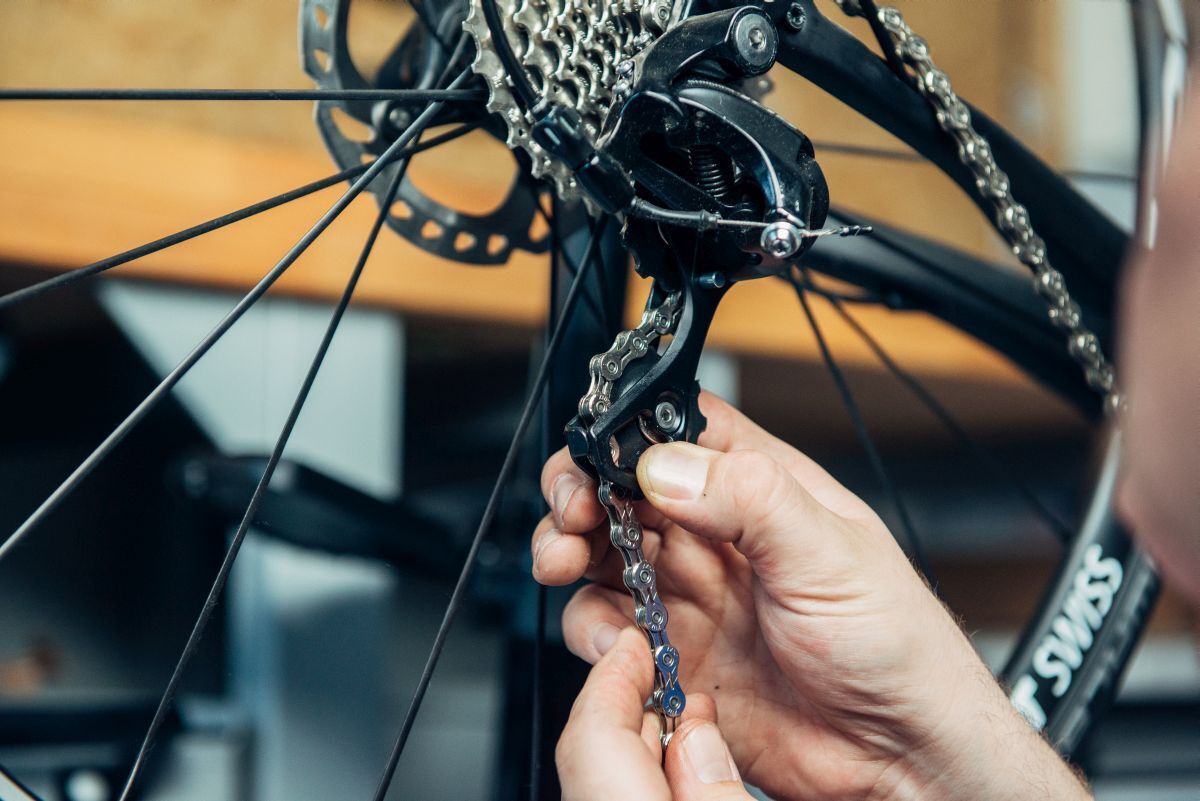
Replacing the sprocket
Problem: An irregular shifting behaviour, an uneven running of the chain or a slipping of the chain when pedalling.
Why is this important? If the teeth of the rear sprocket are worn and can no longer hold the chain securely, this significantly impairs the performance of your bike.
Solution: Look at our how-to change sprockets and acquire the necessary knowledge.
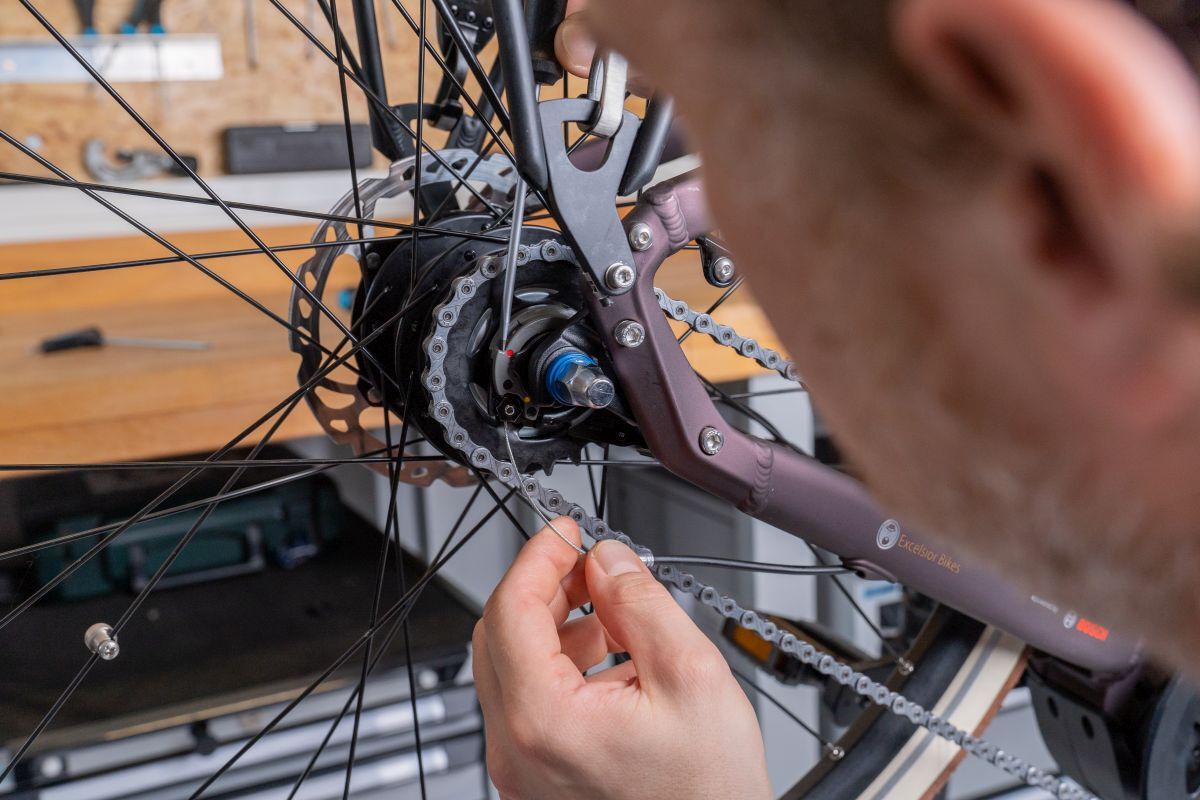
PS: When it comes to replacing a sprocket unit with multiple gears, we have created a How-To for the future. This also applies to replacing the chain ring at the front of the crank. However, we already have a How-To for changing the motor sprocket on an e-bike.
Tip for the pros: Set the gears correctly instead of replacing parts
Problem: You have problems changing gears. There are creaking, scraping, or grinding noises when changing gear. Or the shifting process is very delayed.
Why is this important? If the gears on your bike don't work, it doesn't automatically mean that something is broken. Correct adjustments often do the trick and save a trip to the shop to replace expensive parts. This will save you a fair amount of money.
Solution 1: Take a look at the How-To derailleur adjustment and ensure smooth gear changes. It's easier than you might think at first.

Solution 2: If you have a gear hub, the first how-to will not help you. Then you need to click on the instructions for adjusting the gear hub.

Solution part 2: Simply fitting the saddle is not enough. In the saddle adjustment guide will you learn how to adjust the saddle ergonomically so that you sit perfectly on your bike.

Light
There are plenty of detachable and USB rechargeable lights for bikes (such as our DLUX Micro series), but only a permanently installed lighting system with dynamo provides unlimited power. Unless it is defective. Our troubleshooting guides will help you, should there be any problems.
Bicycle light does not illuminate
Problem: Despite an installed lighting system with a hub dynamo and intact cables, the front and rear lights do not light up.
Why is it important? Without lights, you can't see your way and other road users won't recognise you. In the worst-case scenario, this can even lead to an accident. In addition, according to the German Road Traffic Licensing Regulations (StVZO), you must have lights on your bike, whether they are permanently mounted dynamo lights or removable battery-powered lights. Otherwise you could be fined.
Solution: Our bike light repair guide will give you the information you need to fix your lights.

Fitting new lights on the bike
Problem: Your old lighting system is not working any more. Or you want to enjoy more power and radiance, as with our DLUX series.
Why is this important? Even if the individual parts are permanently installed, they can still be replaced. You just need to know how to do this.
Solution: Look at the instructions for fitting the lighting to skilfully replace the front or rear light.

Add-on parts
A good bike is more than the sum of its individual parts - but these make a big difference to how well it suits you, how ergonomic it is and how much you enjoy riding it.
Safety first: Checking whether the handlebar, stem and seat post bolts remain secure - not too tight and not too loose - should always be part of a bike (and e-bike) inspection. Today, the optimum torque is almost always specified. You can achieve this with a torque spanner. And always remember: after too tight comes too loose!
Steering centre: replacing handlebar and stem
Problem: Handlebar and stem can be defective after a fall. Other reasons could be that the handlebar might have the wrong width or the mounted stem has the wrong length/angle and does not fit the riding position you would like.
Why is this important? The riding position can be effectively adapted to your body, especially with handlebars of different widths and stems of different lengths or angles.
Solution: We show how to do this in the handlebar and stem replacing tutorial.

Seatpost
Problem: The old seatpost is too short and cannot be extended sufficiently to allow you to reach the correct saddle height. There may also be cracks, other damage, defective bolts or other wear and tear at some point. And finally: you might want to fit a suspension seatpost for more comfort.
Why is it important? The seatpost is an essential part of a well-adjusted bike.
Solution: You can install a new seatpost yourself with our guide.

Replace a normal seatpost with a dropper seatpost
Problem: Your saddle is often in the way - for example when mountain biking - and you want to benefit from the many advantages of a dropper post with quick height adjustment.
Why is it important? More freedom of movement with just the push of a button is an advantage that is clearly noticeable in offroad terrain and in everyday use.
Solution: Go through our step-by-step guide on how-to mount the dropper seatpost.


Dropper seatpost service made easy
There are service kits for almost all dropper seatposts in our range, which you can use to complete minor maintenance work yourself. For example, for the Nara Drop, Nara Dropair and Drop-A-Gogo.
Headset
The two bearings in which the fork rotates are in the headset. Two main problems can occur here.
Loose headset
Problem: The headset connects the bike and handlebar. Apply the front brake and move the bike forwards and backwards. Now take hold of the top part of the headset, the headset cup, with your other hand. Can you feel if there is any wobble? If so, the headset is loose.
Why is it important? A loose headset can lead to unstable steering behaviour and loss of control of your bike.
Solution: The headset must be tightened according to the manufacturer's instructions without play, but not too tight. Just enough so that nothing wobbles. We have planned a detailed how-to for the future.
Dirty or damaged headset
Problem: The bearings in the headset are worn, rusted or dirty due to inadequate sealing.
Why is it important? If the headset does not turn smoothly, you cannot use your bike safely.
Solution: Clean the headset and check for damage; replace worn bearings and parts if necessary. Our bearing grease Care+ Grease is your best choice for ball bearings.
Suspension fork
The fork comes right next after the frame in terms of importance and load it has to manage. During inspection and subsequent maintenance, a lot of attention should be paid to it, especially if it is a suspension fork.
Damaged seals on the suspension fork
Problem: Leaking seals. You will notice this from leaking oil or an increasingly greasy film on the upper tubes. In addition, an air suspension fork can sag too much because it loses air.
Why is it important? Dirt and moisture can get into the suspension fork and prevent it from working smoothly. Your suspension fork no longer damps properly. This means that shocks through bumps are transmitted directly to your body. The ergonomic advantage of your suspension fork is gone.
Solution: Suspension elements - including the rear shock on the full-suspension bike - are sensitive and must be serviced by professional mechanics. Use our dealer locator to find a workshop near you.
More tips for suspension elements on MTBs and SUV e-bikes
The seals of suspension elements should not be dirty. When cleaning, you can spray the thinner tubes (stanchions) that slide into the larger ones (sliders) with Care+ Silicone spray and wipe it off again. But use it sparingly, Also note, that there is no need to oil suspension elements from the outside for them to work. The actual lubrication takes place on the inside.
Also test the small pulleys and levers for adjusting the suspension elements. Are they tight? Then a squirt of Care+ Silicone will help. This will prevent these parts, which are usually made of aluminium, from seizing up.
Last step of the bike inspection: a final test ride
Before you go on a longer tour after a bike repair, you should take a short test ride and check whether everything works. And now we wish you all the best with your cycling.
















